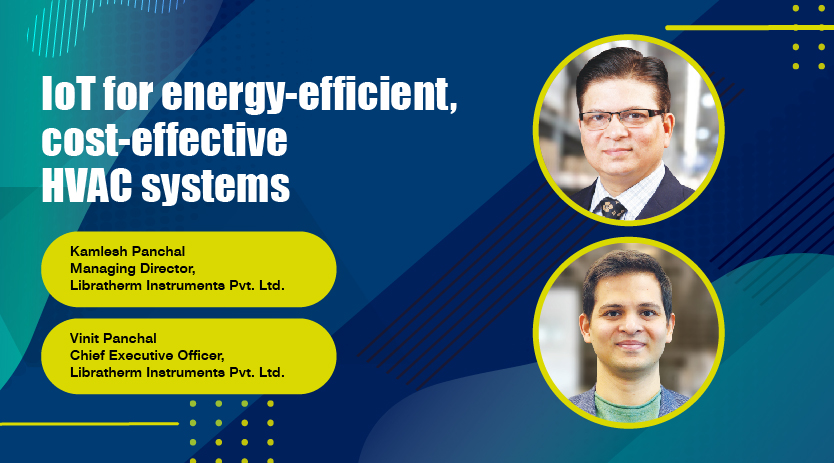Embedded intelligence in AMRs enables navigating the path to maximise productivity
October 31, 2022 5:15 pm
Flexible manufacturing is built on the concept of cells, and the different material flow pushes the demand for AGVs and AMRs.
With robotic automation growth and booming infrastructure growth over the last few years, the industry has taken cognisance of automation and is utilising the benefits of robots. The advancement in safety sensors and applications has further enhanced the agility of the robots. Robots are becoming an attractive option for adopting applications working with humans. More players entering the market have also helped to expand its utility.
Another notable aspect is the rising consideration of developing smart cities, EV vehicle production & infrastructure and industrial corridors. With all such activities going on, one can expect a strong movement & development in the infrastructure segment shortly. This will provide a solid impetus for industrial development, opening more vistas for adopting robotics technology.
The global industrial robots market size, USD 15.60 billion in 2021 and USD 16.78 billion in 2022, is anticipated to reach USD 35.68 billion by 2029, registering a CAGR of 11.4 percent during 2022-2029. The growth of small and medium sized factories and increasing investments across various industries stimulate the market’s growth. (Source: Fortune Business Insights report titled, “Industrial Robots Market, 2022- 2029”)
Robotic functionality designed for the MHE The robots are bringing in ingenuity and creativity by caring for repetitive manual labour. Some of the functionality includes-
- Pick & Place: They perform simple activities like picking and placing in a matrix or palletising and complex activities, like identifying randomly oriented objects and recognising in precise matrices. The robots deliver precision and speed to the applications, leading to greater productivity and quality.
- Goods Movement: Autonomous Mobile Robots (AMRs) and Automated Guided Vehicles (AGVs) have a more significant role involving the movement of goods.
- Quality Inspection & Precision: Robots are useful for tasks which require a very high level of precision where makers do not wish to depend on manual intervention. Activities fall under this category when handling naked food like chocolates, cookies, seafood, etc.
- Collaborative robots are emerging as one of the unique solutions in the material handling segment owing to their close harmonious communication interface with human beings.
This creates oneness on the floor by working together.
Either shifting from a conventional ‘hard-tooled cell’ to a progressive ‘flexible integrated cell’ or replacing fixed conveyors, robots are bringing greater flexibility to the shop floors resulting in improved productivity and efficiency.
For instance, OMRON Mobile Robots, known as the most productive Autonomous Intelligent Vehicles, are carving a significant niche in space. They are adding a lot of value to material handling (like tyre makers) by creating collaboration between human beings & machines to increase productivity in various operations. The cobots are easier to integrate with other factory automation products of Omron to realise an innovative manufacturing environment where humans and machines work in harmony. During learning to work with robots, the employees can hone skills which will enable them to focus more on higher-level tasks that demand more complex skills.
AMRs navigate shopfloor
OMRON AMRs have sensors to navigate the shopfloor and detect dynamic obstacles to prevent a collision. The sensors provide the ability for feature navigation. The onboard intelligence enables them to optimise the path to maximise productivity. These AMRs are safety compliant and can work safely with humans. The Wi-Fi connectivity allows them to coordinate with the central fleet manager and work together collaboratively with other AMRs on the shop floor.
Total traceability solutions
We have been empowering manufacturers in diversified industries, such as Automotive, F&C, and Medical, to ensure zero-defects manufacturing. We also manage to render intelligence to the quality checks – via IoT-driven senor-enabled applications. We are one of the leading players in traceability. We have the largest product and solution portfolio in Laser Markers, Barcode Readers and Verifiers, RFID readers, and Machine Controllers. These can read and write from the MES/ ERP layer to support traceability implementation.
OMRON’s ‘Total Traceability’ solution provides the ability to trace & verify the history, location, or application of an item using documented recorded identification. One defective product can bring tremendous loss and setbacks to a brand’s credibility. The solution holds a lot of importance to ensure a zero -defects manufacturing system. This is significant for industries where assembling multiple complex components needs constant checking at every step. Also, the product-recalls are witnessed quite often.
Furthermore, Cloud computing and analytics empower the makers to utilise the data creating immense value for the shop floors. Much data is extracted from the shopfloor using IIoT via smart sensors, vision, RFID, etc. The new advanced generation of PLCs can rapidly move this data into the MES/ERP/cloud layer. This arms up shopfloor managers with a pool of valuable information to be worked upon. It helps them to initiate real-time measures like predictive maintenance by identifying potential issues and implementing productivity solutions.
Flexible manufacturing is pushing demand for AMR
To provide consumers with unique experiences and cater to rapidly changing market requirements, manufacturers’ desire is resulting in the demand for flexible manufacturing. Flexible manufacturing is typically built on the concept of cells. The material flow through these cells remains flexible to enable different product outcomes. This is where AMRs (or AGVs) can replace traditional transport systems like conveyors, etc. Moreover, this flexible manufacturing is pushing the demand for AMRs.
Cookie Consent
We use cookies to personalize your experience. By continuing to visit this website you agree to our Terms & Conditions, Privacy Policy and Cookie Policy.

















 English
English Hindi
Hindi